‘Miserable’ Harlem kids beg for help as state KOs charters
Students in one embattled Harlem district have left their public schools in droves – and some who remain are begging for a way out.
Two-thirds of District 5’s elementary and middle schoolers, and 57% of students there overall, have spurned failing and dangerous Department of Education-run schools, making the district the only one of 32 in New York City where a majority of kids attend a publicly funded, privately run charter school.
“We’re so miserable,” Mariama, a junior at the DOE’s Frederick Douglass Academy in East Harlem told The Post. “Please help us!”
But the stark enrollment imbalance has now made District 5 the target of a poison-pill rule in the new state budget barring new charters in any such district.
Under Gov. Hochul’s April budget deal, no new charter schools can be placed in any district that already enrolls more than 55% of its students in the alternative learning institutions.
District 5 appears to be the only school district in the state hitting that limit.
“This penalizes parents by not giving them the best process of getting their children an education – and more importantly, it penalizes the kids,” fumed state Assemblyman Alec Brook-Krasny (R-Brooklyn).
A Failing District
Students in District 5 DOE schools scored abysmally on last year’s state tests for grades 3 through 8. Only 19% of their students tested proficient in math, with 31% deemed proficient in English.
That compares to the 51% math proficiency and 56% English proficiency scored by the district’s charter school kids, records show.
“I was mortified to see the state testing results” for local DOE schools, Harlem mom Marsha Taylor told The Post. “I said, ‘I’m not sending my kids here, this is crazy.’”
She enrolled her two children in Global Community Charter School on 5th Avenue and 141st Street instead.
Disorder is rampant in many of the district’s DOE schools, kids and parents say, with lax discipline, chronic bullying, and near-daily fights.
District 5, which covers much of Central Harlem and parts of East and West Harlem, suffered the DOE’s lowest attendance rate last year: just 83%, compared to 88% citywide.
Parents and students at some of the neighborhood’s most troubled DOE schools complained of a host of problems, including disinterested staff, low academic standards, and frequent violence.
Frederick Douglass Academy, a combined middle and high school for grades 6-12 at Adam Clayton Powell Boulevard and 149th Street, tallied 24 weapons busts in 2019, the most citywide.
“You see a lot of fighting. It’s almost every day,” one 14-year-old FDA freshman complained.

“There’s not even a handful of teachers at this entire school that actually care about their jobs,” charged a junior who has attended Frederick Douglass since 7th grade, when her family immigrated from Jamaica. “I expected way much better in America.”
“This is supposed to be a college preparatory school – this school doesn’t prepare you for nothing at all,” another 11th-grader said. “We don’t learn nothing about going to college.”
At PS/MS 46 on Frederick Douglass Boulevard, parents say pint-sized gangbangers run amok – and every single 8th-grader who sat for the state’s math exam 2019 flunked it.
“I’m not happy with the education here,” said Joshelle Ellerbe, whose three kids attend the East Harlem school.
“I’ve heard that students falling through the cracks might not do well on the state tests, and the teachers … kind of vouch for them” to pass their classes anyway, she said.. “That’s not good at all.”
Nine-year-old gang members bullied her son relentlessly when he was a third-grader at PS 46, Jinet Dickerson recalled.
“A boy wanted to fight him in the bathroom on the second day he was there… and it kept on, kept on and kept on,” the mother of seven said.
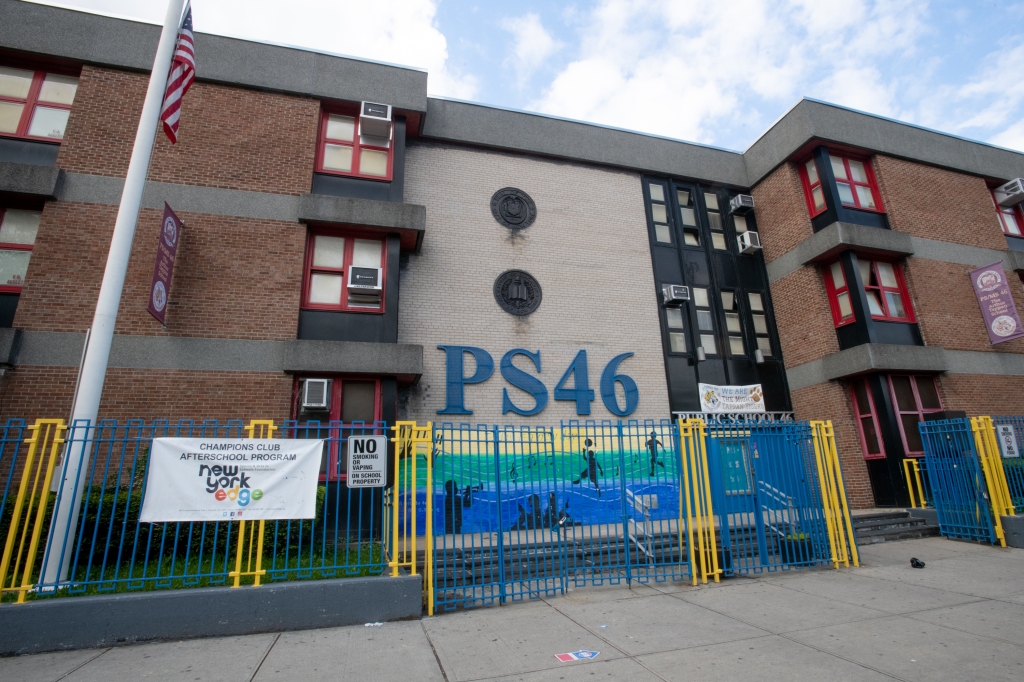
“It’s not about the teachers,” she said. “It’s more about the schools, the DOE … the lack of accountability.”
When her youngest child was ready for kindergarten, Dickerson had had enough. Dorothy, age 9, attends Harlem Success Academy, a charter school on West 140th Street.
“This one, I got out quick,” Dickerson said. “If I could have put all my kids in charter school from the beginning, I would have.”
When The Post visited the DOE’s Thurgood Marshall Academy on W. 135th St. at a recent dismissal, a heated verbal dispute between two groups of boys drew about 75 student spectators. Eight NYPD officers were needed to break things up.
“Don’t be surprised if you see another fight. There are always fights,” said Kay, an 18-year-old senior at the W. 135th Street school. “Kids disrupt class, they’ll be skipping [class], smoking, dice-playing.”
Kay attended nearby Democracy Prep Charter Middle School, also on W. 135th Street, as a youngster.
“I wish I would’ve stayed in charter school,” she said. “You actually got in trouble for doing stuff. Like, there were consequences.”
At Thurgood Marshall, “There’s no structure here – people get to do whatever they want,” Kay said. “The kids will win at the end of the day.”
A Different World
Just 12 blocks away, on Madison Avenue and Dr. Martin Luther King Jr. Boulevard, the state-of-the-art building that houses the K-12 Harlem Children’s Zone Promise Academy II offers a host of services and an orderly environment for some of the city’s neediest kids.
“My belief is, given a real opportunity, our children will be just as successful as any kid, anywhere in this country,” visionary educator Geoffrey Canada, who founded the first of Harlem’s two Promise Academy schools in 2004, told The Post.
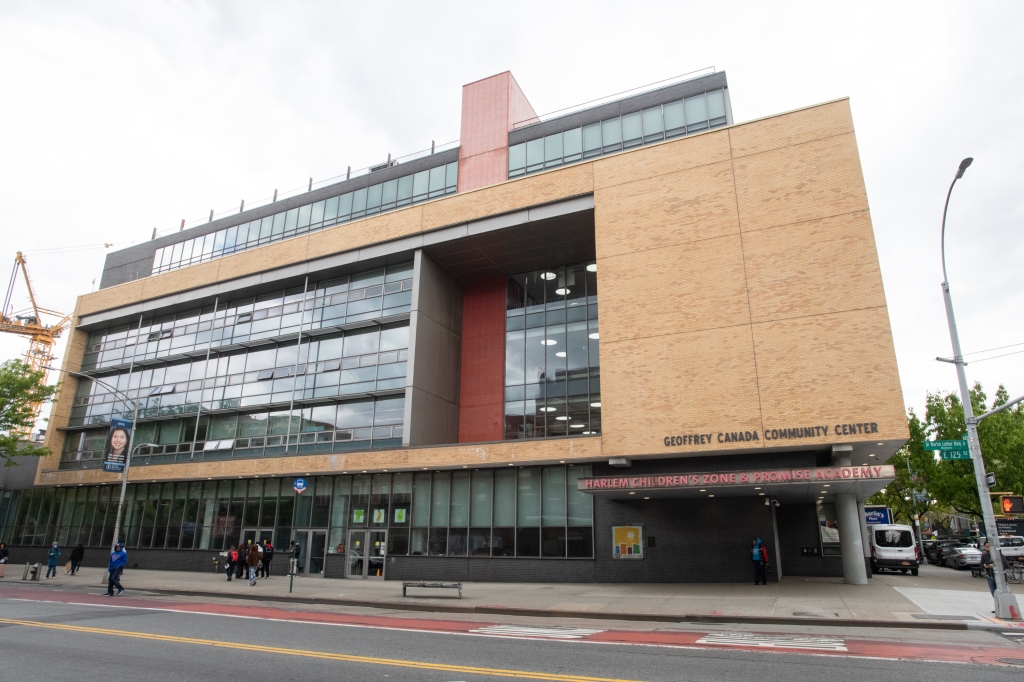
“In traditional public schools, it’s kind of like one-size-fits-all,” said Canada, who retired as HCZ’s CEO in 2014 but remains president of the board. “We wanted to customize some schools so it met the needs of these students.”
Promise Academy’s high school graduation rate is 99.4%, compared to 74% for District 5 as a whole.
The charter school’s students aced the state’s Regents exams last year, scoring 93% proficient on the English Regents, compared to 76% in District 5 DOE schools, and 81% passed Algebra 1, compared to 46% in the neighborhood’s DOE schools.
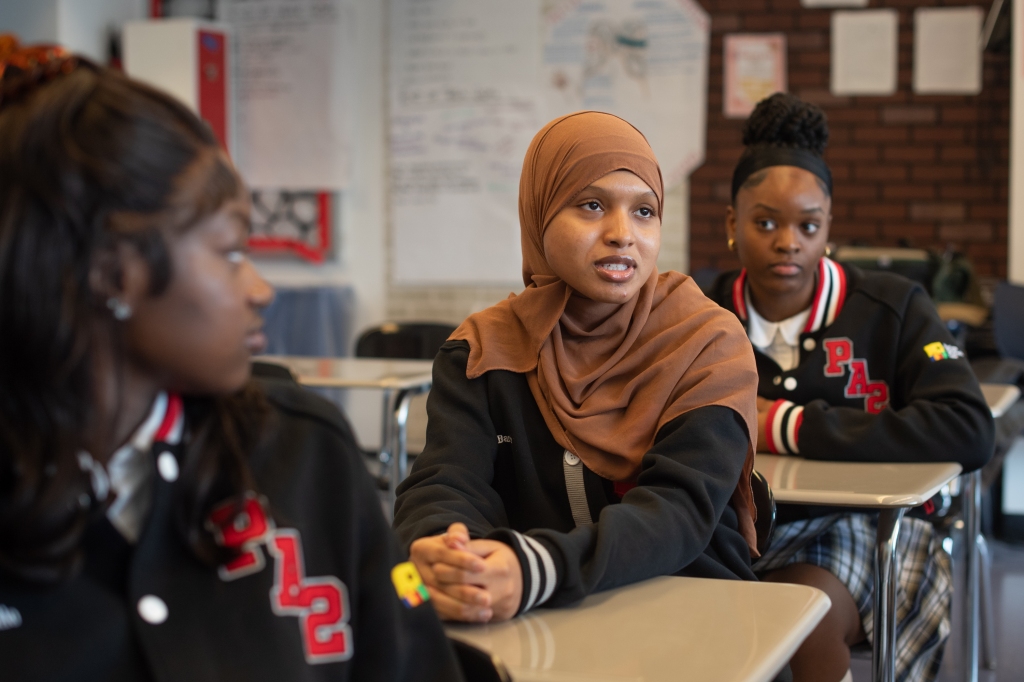
Most striking: 83% of Promise Academy’s black students scored proficient on the Algebra 1 Regents last year, compared to 28% in District 5 DOE schools. In ELA, 92% passed the Regents English test, compared to 63% in DOE schools.
“I think you find, with any set of education options, parents will vote with their feet,” Canada said.
Charter schools are publicly funded, but privately run by non-profit groups. Most are non-union, so have more flexibility in who they hire and how they operate. Some offer a longer school day and year, or impose harsh student discipline. Admission is solely by lottery.
The state grants five-year “performance contracts” – charters – that focus on teaching, enrollment, and other benchmarks. Low performing schools can be closed if they don’t live up to their pledge.
About 141,000 city students now attend charter schools, making up 15% of the student body citywide. Most of them, 80%, are from economically disadvantaged families, according to the New York City Charter School Center.

City charter schools get $17,626 of taxpayer dollars per student each year, plus space in city buildings or partial rent support, compared to the $35,941 for each student in a DOE school, according to the New York City Charter Center and Citizens Budget Commission.
But many charters get government and corporate grants that can total in the millions annually, so their actual per-student spending can add up to much more. Canada’s two Harlem Promise Academies, for example, took in $123 million in private donations and nearly $10 million worth of city, state, and federal grants in 2019, according to its most recent filings.
Despite the success of many charter schools, Albany Democrats, in lockstep with the powerful United Federation of Teachers, continues to fight to stymie their growth.
The state budget’s new charter-cap law could block the K-5 Minisink Charter School at Malcolm X Boulevard and 142nd Street, which the Harlem-based Mission Society planned to open in 2025.
The non-profit, which offers after-school and summer programs for kids in danger of dropping out, had hoped to serve the neediest students by limiting class sizes to 12, said CEO Elsie McCabe Thompson.
“It’s unjust,” Thompson said of the 55% cap. “That means 45% of parents are precluded from having a choice.”
The Mission Society will continue to lobby for a change or exemption in the law to squeeze in its charter.
“However they do it, I don’t care,” she said. “I just want to be able to open our school.”
CASE STUDIES
Marsha Taylor
Marsha Taylor’s now 10-year-old son, Philip Robertson, was set to go to Thurgood Marshall Lower School for kindergarten when she heard from a friend about Global Community Charter School.
“I said ‘Let me check it out,’” Taylor recalled.
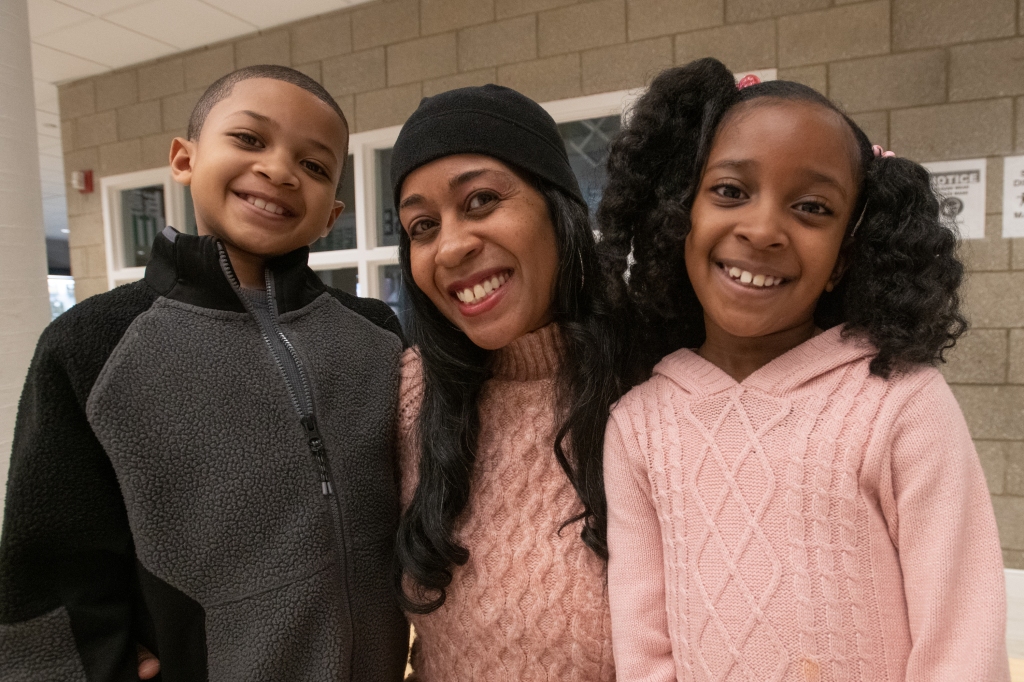
At the time, Taylor “still wasn’t 100 percent sold” on public schools — in part because of the poor state testing scores the DOE schools in her neighborhood produced, she said.
“I was not pleased at all, as a parent, to see the underperforming scores” of DOE schools, Taylor explained.
When she visited Global Community, “I was completely sold on the school itself: The presentation, the staff, the warm welcome, the offering of the IB curriculum and languages and arts,” Taylor said.
The mother of two noted that the charter school’s higher state test scores were “the deciding factor.”
“I made the switch and I’m glad that I did. I have not regretted my decision,” she said.
Taylor’s 8-year-old daughter, Mariah Robertson, also attends Global Community as a second grader.
Joshelle Ellerbe
Joshelle Ellerbe, 31, is “not happy with the education here,” at PS 46 — a DOE school she graduated from herself in 2002.
Her third-grade son Abdul-Maleek is a “really intelligent kid,” Ellerbe said, but she was shocked recently when she asked if he knew the meaning of the word “additional” — and found he did not.
“If you look at the vocabulary list he’s given, some of the words are not up to par,” the mother of three said. “If you go online and look up third grade vocabulary words – grade-level, appropriate words that he should know – I’ve given him those words, and he’s like ‘What?’

“Same thing when I’ve reviewed some of their work and ask to see their notebook. Kids should have aims and notes – my kids, they have none.
“[My] kids are at this school and they don’t really have much to show for it. What’s going on?” she asked.
Ellerbe also isn’t a fan of the school’s new principal.
“The current principal has gotten into some verbal altercations with parents … And I’m just like, ‘That’s not cool,’” she said.
Assiatou D.
“I’m definitely proud,” said Assiatou, 17. “I’m going to be a first-generation college student.”
The senior, who has attended the K-12 Harlem Children’s Zone’s Promise Academy II since the early grades, is headed for the Ivy League. She plans to major in nursing at the University of Pennsylvania this fall.
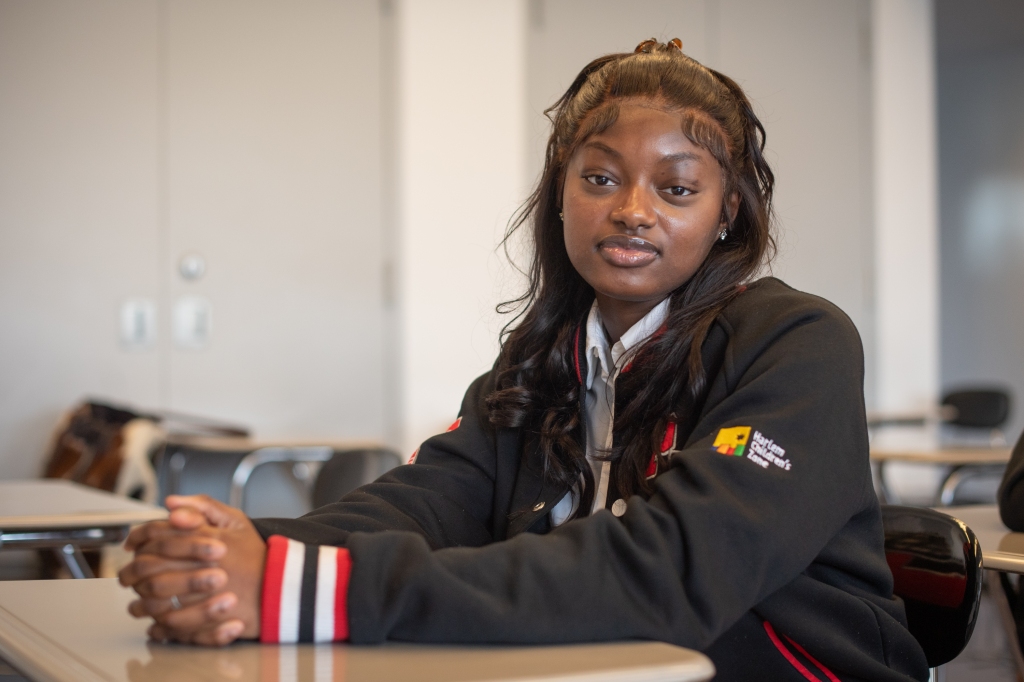
“Throughout each stage of my school career – elementary school, middle school and high school – I’ve had specific teachers who’ve helped me get here,” Assiatou said, citing a string of mentors who “really spoke to us being on top of ourselves, pursuing our goals.”
Last summer, she spent two weeks at Harvard University, where she took an ethics course, part of a program offered to all juniors.
“That experience definitely shaped a lot of my interests,” Assiatou said. “I’m so glad I went.”
All expenses for her Harvard course, and many other costs throughout her school career, were paid by HCZ, she said.
“In terms of uniforms and going on trips, they’ve graciously covered all of that,” Assiatou said. “They’ve exposed me to a lot of opportunities.”
Read the full article Here


